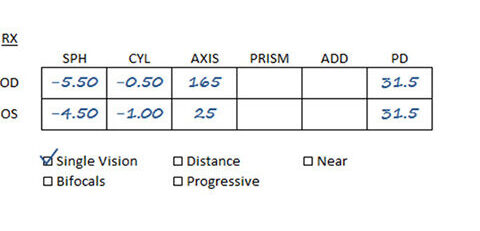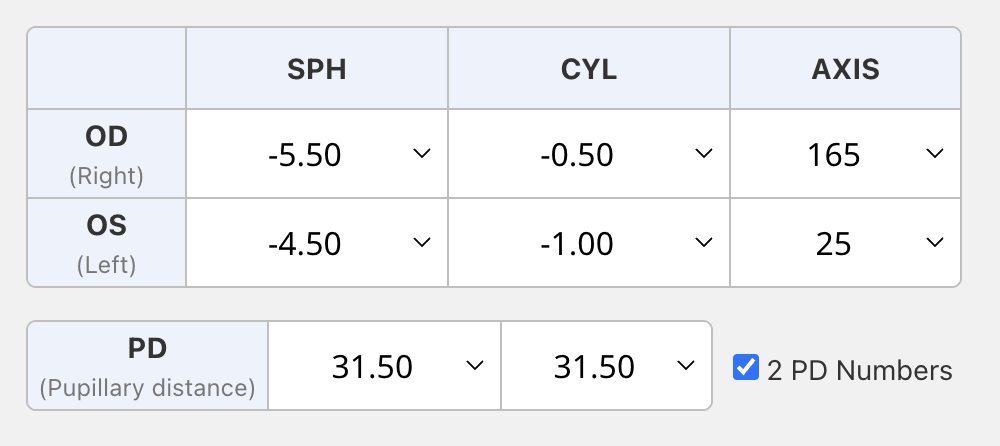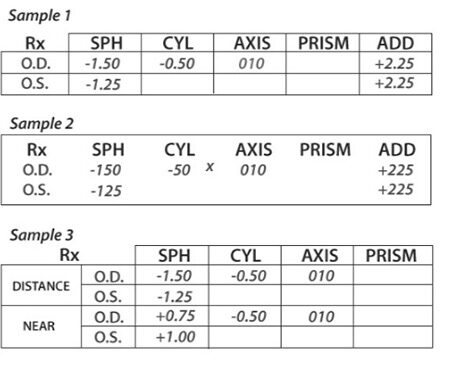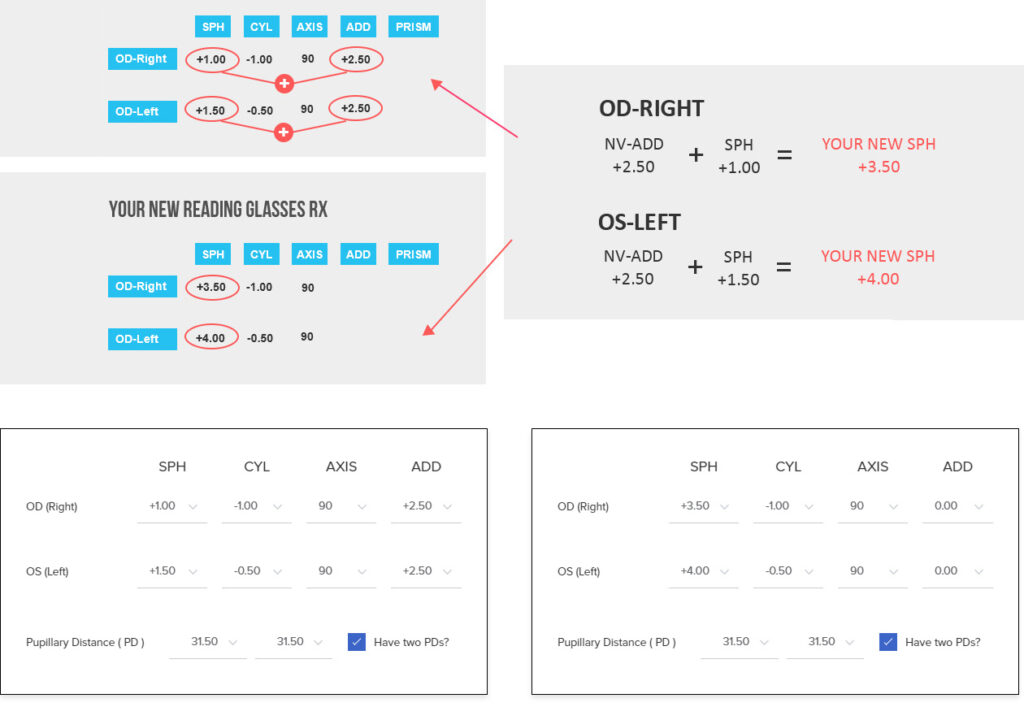Eyeglass prescriptions can seem complex at first glance, but once you understand the terminology and layout, they’re straightforward to interpret. This guide explains how to read and write a standard eyeglass prescription.
An eyeglass prescription typically includes several key terms and numerical values:
OD and OS
SPH (Sphere)
CYL (Cylinder)
Axis
ADD (Addition)
PD (Pupillary Distance)
A single vision prescription will feature a number with a minus (-) symbol in the ‘sphere’ box. This means your lenses will be shaped to improve your distance vision.


A progressive prescription(multifocal prescription) will include an ADD value, sometimes marked as NV. This indicates the required strength for the near prescription in your lens.


A prescription for someone who is farsighted will feature a number with a plus (+) symbol in the ‘sphere’ box. This indicates that your lens should be shaped to correct near vision.
If your prescription is like the following ones, you need to fill in information like the example below. (Note: there is no PD value in the prescription, but you need to fill in your PD value)

If you don’t have any medical issues that affect your vision, you should have a comprehensive eye exam every one to two years.
Children should have their first eye exam when they are around six months old, and then another just before they start school. This ensures that they can see clearly in class; poor vision can seriously impact a child’s learning
© 2025 All rights reserved